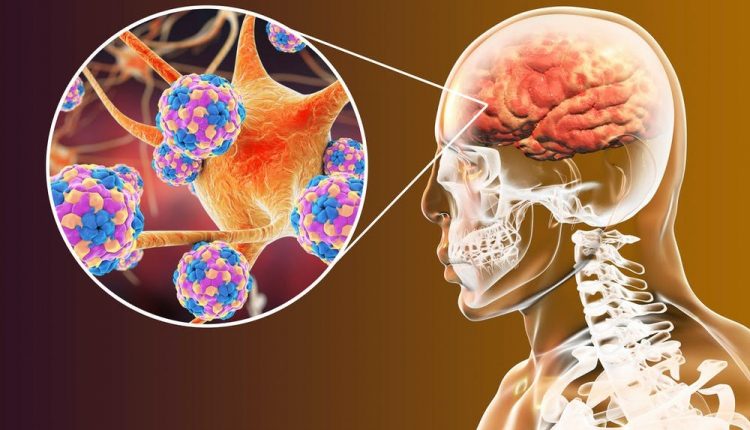
Meningitis, causes and symptoms
Meningitis is an inflammatory disease of the meninges, the membranes lining the brain and spinal cord
The infection affects the membranes and the fluid (cerebrospinal fluid) that flows between them.
The disease mainly affects children under the age of 5, young people between the ages of 18 and 24, and the elderly
Some bacterial strains that cause meningitis are contagious and can be transmitted from one person to another through coughing, sneezing, sharing toothbrushes or cutlery during meals.
People who live and sleep in communal environments, such as students or military personnel in barracks, have a higher risk of being infected.
Meningitis can present in an acute form, if the clinical picture is completed within hours or days, or chronic, with symptoms lasting for weeks or months.
Causes of meningitis
The disease is usually infectious (meningitis of bacterial, viral or fungal origin) but can also be caused by chemical and physical agents, or as a response to neoplasms and autoimmune diseases.
Viral meningitis, also called aseptic meningitis, is the most common. It resolves within about ten days and usually has no serious consequences.
Bacterial meningitis is rarer, but can have fatal consequences.
Usually, the bacterial infection originates elsewhere in the body, from where the bacteria can reach the meninges through the bloodstream.
The bacteria responsible belong to different species:
- Meningococcus (Neisseria meningitidis). Transmission occurs via the respiratory route. In 10-20% of cases the disease is rapid and acute, with a fulminant course that can lead to death within a few hours despite appropriate treatment.
- Pneumococcus (Streptococcus pneumoniae). It reaches the brain via the bloodstream from other parts of the body. It may be associated with an infection of the respiratory or auditory system.
- Haemophilus influenzae (Haemophilus). Until the 1990s it was a very common agent of meningitis. Then, with the arrival of the vaccine, the cases caused by this bacterium were greatly reduced. Hib infection originates in the respiratory tract.
- Listeria: extremely rare, affects mainly immunocompromised individuals.
- Mycotic meningitis (originating from fungi) generally occurs in individuals whose immune system is depressed for some reason, such as AIDS patients, for whom it can still be life-threatening.
Finally, meningitis can also result from allergies, some type of cancer and inflammatory diseases.
Symptoms of Meningitis
Bacterial meningitis may initially present with very general symptoms similar to those of other cold illnesses.
Symptoms usually worsen within a couple of days.
Bacterial meningitis may occur suddenly, accompanied by very high fevers, acute headaches, vomiting, stiffening of the neck, drowsiness, convulsions, intolerance to light, and lack of appetite.
In infants, some of these symptoms are not very obvious: there may be continuous crying, irritability, drowsiness and poor appetite.
Sometimes swelling of the head is noticeable.
The diagnosis of meningitis is made with an analysis of the CSF content and a bacterial culture.
Early identification of the bacterial species causing the infection is the only method of acting appropriately with both treatment and prevention of contagion to other individuals.
Meningitis: complications
Meningitis is a potentially fatal disease, which progresses rapidly; from the onset of symptoms to death may take a few hours.
Mortality clearly varies depending on the infecting agent, and in general the viral form is more benign, while the bacterial form has significantly higher mortality.
In addition to life-threatening, the disease can have severe and permanent neurological complications (loss of hearing, vision, ability to communicate and learn; brain damage; paralysis).
Non-neurological complications may include kidney and adrenal gland damage.
Treatment of meningitis
With regard to bacterial meningitis, the most appropriate treatment is antibiotic therapy, which may be more effective if the agent strain of the infection is identified.
In the case of meningitis of viral origin, there is no antibiotic treatment, but symptoms usually resolve on their own within a week with the treatment applied to influenza syndromes.
It is very important to subject all persons who have been in close contact with the sick person to prophylaxis.
Since the 1990s, vaccination against Haemophilus Influenzae type B (Hib), which in our country is one of the compulsory vaccinations for newborns, has become commonplace.
Vaccines against many pneumococcal strains and some meningococcal strains are also available on the market.
Read Also:
Emergency Live Even More…Live: Download The New Free App Of Your Newspaper For IOS And Android
What Is The Meningococcal Vaccine, How Does It Work And What Side Effects Does It Have?
First Case Of Meningitis Associated With SARS-CoV-2. A Case Report From Japan
Italian Girl Died Of Meningitis. She Was Returning From World Youth Day In Krakow
Meningitis In Children: Symptoms, Diagnosis And Prevention
Meningeal Signs And Meningeal Irritation In Children And Adults
Positive And Negative Kernig’s Sign: Semeiotics In Meningitis
How To Recognise The Symptoms Of Meningitis In Children? Paediatricians Explain



